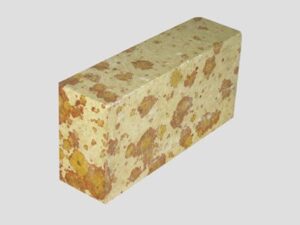Description
Steel Fiber Reinforced Castables: Enhancing Performance in High-Temperature Applications
In high-temperature industries like steelmaking, cement production, and petrochemical processing, the lifespan of refractory linings is constantly challenged by extreme thermal cycling, abrasion, and chemical attack. To combat these harsh conditions, engineers are increasingly turning to Steel Fiber Reinforced Castables (SFRCs) as a robust and reliable solution. These specialized refractories offer significantly improved performance compared to conventional castables, leading to extended service life, reduced downtime, and ultimately, cost savings.
So, what exactly are SFRCs, and why are they gaining so much traction?
Understanding Steel Fiber Reinforced Castables:
SFRCs are a type of refractory castable material that incorporates short, discrete steel fibers distributed throughout the matrix. This seemingly simple addition has a profound impact on the material’s properties. The castable component itself is typically a mixture of refractory aggregates (e.g., alumina, silica, magnesia), binders (e.g., calcium aluminate cement), and additives, meticulously formulated to withstand specific operating conditions. The inclusion of steel fibers, usually ranging from 0.5% to 5% by weight, elevates the material’s performance to a new level.
The Power of Fiber Reinforcement:
The steel fibers act as crack arrestors and stress distributors within the castable matrix. This mechanism provides several key advantages:
- Enhanced Crack Resistance: The most significant benefit of SFRCs is their ability to resist crack propagation. Under stress, cracks initiate, but the steel fibers bridge these cracks, preventing them from widening and leading to catastrophic failure. This improved resistance to cracking is crucial in environments subjected to thermal shock and mechanical loading.
- Increased Toughness and Ductility: Unlike brittle conventional castables, SFRCs exhibit improved toughness and ductility. They can absorb more energy before fracturing, making them more resilient to impact, abrasion, and thermal cycling.
- Improved Spalling Resistance: Spalling, the breaking away of surface layers, is a common failure mode in refractories. The fiber reinforcement in SFRCs helps to hold the matrix together, reducing the likelihood of spalling, particularly during rapid temperature changes.
- Enhanced Load-Bearing Capacity: The presence of steel fibers contributes to increased compressive and flexural strength, allowing SFRCs to support heavier loads and withstand greater stresses.
- Reduced Downtime and Maintenance: By extending the lifespan of refractory linings, SFRCs significantly reduce downtime for repairs and replacements. This translates to increased productivity and reduced maintenance costs.
Applications of Steel Fiber Reinforced Castables:
The versatility of SFRCs makes them suitable for a wide range of demanding applications, including:
- Steel Industry: Ladle linings, EAF roofs, tundishes, and blast furnace troughs.
- Cement Industry: Preheater towers, kiln hoods, and cooler walls.
- Petrochemical Industry: Reformer tubes, incinerator linings, and reactor vessels.
- Power Generation: Boiler walls, cyclone separators, and coal gasifiers.
- Aluminum Industry: Electrolytic cell linings and holding furnaces.
Considerations for Selecting and Using SFRCs:
While SFRCs offer significant advantages, careful consideration must be given to their selection and application:
- Fiber Type and Properties: Different steel fiber types exist, including melt-extracted, cold-drawn, and hooked-end fibers. The choice of fiber depends on the specific application requirements, such as temperature resistance, corrosion resistance, and bonding characteristics.
- Mix Design: The optimal mix design, including the type and amount of binder, aggregate, and additives, is crucial for achieving the desired performance.
- Placement Techniques: Proper placement techniques, such as casting, pumping, or shotcreting, are essential to ensure uniform fiber distribution and minimize segregation.
- Curing and Drying: Controlled curing and drying procedures are necessary to develop the required strength and minimize shrinkage cracking.
- Corrosion Protection: In certain environments, corrosion of the steel fibers can be a concern. Specialized fiber coatings or the use of corrosion-resistant alloys may be necessary to mitigate this issue.
The Future of SFRCs:
The future of SFRCs is bright, with ongoing research focused on further enhancing their performance and expanding their applications. Innovations include:
- Development of new fiber alloys with improved corrosion resistance and high-temperature strength.
- Optimization of mix designs to improve workability and flowability.
- Incorporation of advanced additives, such as nano-materials, to enhance mechanical properties and durability.
- Development of sustainable and environmentally friendly SFRCs using alternative binders and aggregates.
Conclusion:
Steel Fiber Reinforced Castables are a crucial advancement in refractory technology, offering significant improvements in performance and longevity in demanding high-temperature environments. Their ability to resist cracking, enhance toughness, and improve spalling resistance translates to reduced downtime, increased productivity, and lower overall costs. As industries continue to push the boundaries of high-temperature processing, SFRCs will undoubtedly play an increasingly important role in ensuring the reliability and efficiency of refractory linings. By carefully selecting the right materials and applying them using proper techniques, engineers can unlock the full potential of SFRCs and optimize the performance of critical industrial processes.















Reviews
There are no reviews yet.